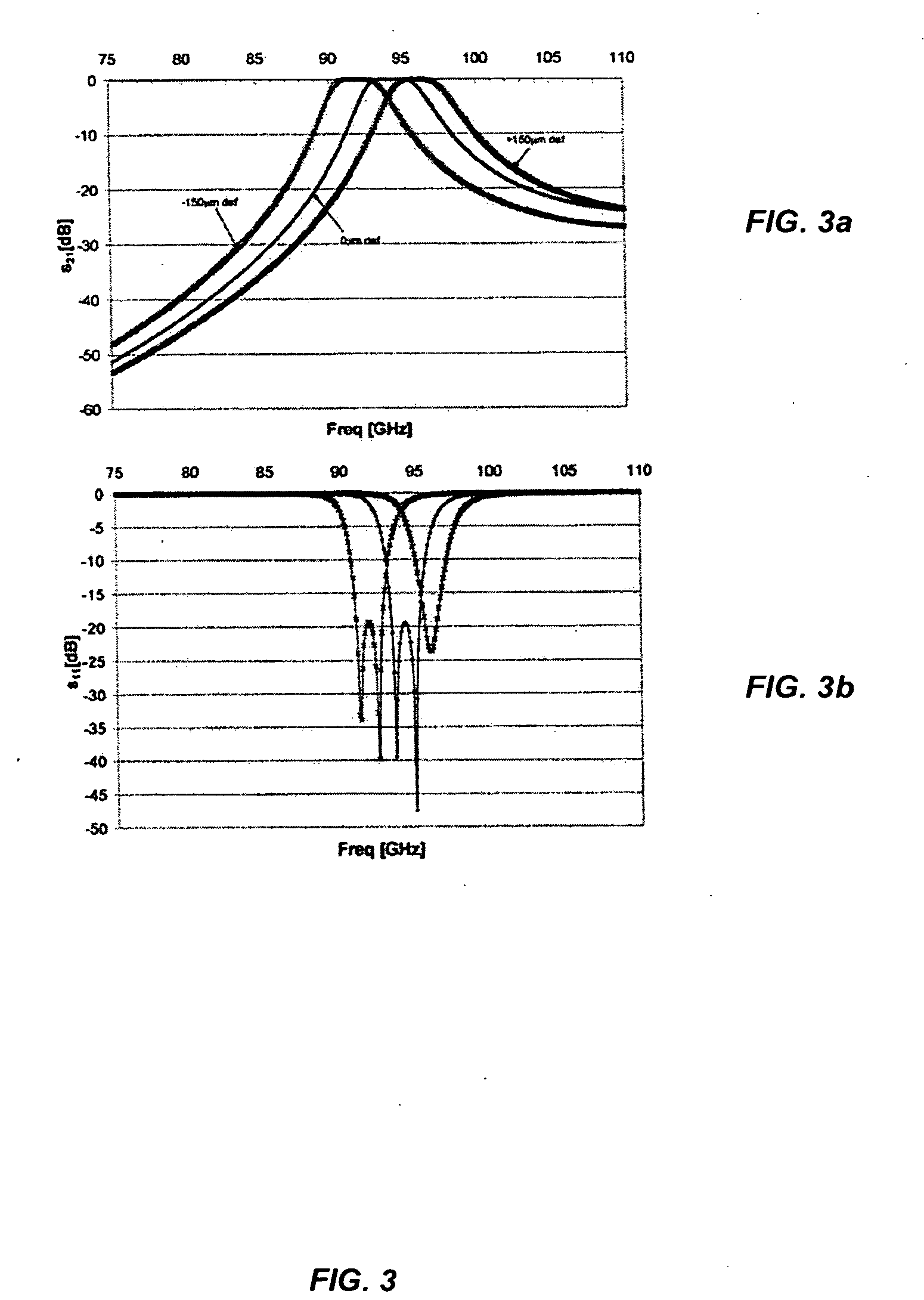Waveguide-based MEMS tunable filters and phase shifters
a technology of tunable filters and waveguides, applied in the field of microelectromechanical systems (mems) tunable filters and phase shifters, can solve the problems of linearity, high loss, and inacceptable signal-to-noise ratio
- Summary
- Abstract
- Description
- Claims
- Application Information
AI Technical Summary
Benefits of technology
Problems solved by technology
Method used
Image
Examples
examples
[0031]FIG. 5 shows a photograph of a plastic tunable iris filter with integrated flanges, pressure tube and connectors to a network analyzer. The pressure tube is used to deform the membranes of the tunable iris filter.
[0032]For the prototypical tunable filter in accordance with the embodiments of the present invention, the tunable filter scattering parameters s11 (return loss) and s21 (insertion loss) were measured from 75 GHz to 110 GHz using an Anritsu ME7808B network analyzer. The membrane deflection was first characterized under a probe station. When vacuum was applied, the deflection of the membrane was about +150 μm. When a pressure of 0.25 atm was applied, membrane deflection of −50 μm was expected. The deflection data were gathered under the microscope using the focusing / defocusing method. The experimental insertion loss data in FIG. 6(a) shows an insertion loss of 2.36 dB, 2.37 dB, and 2.4 dB when the membrane deflections are +150, 0 and −50 μm, respectively. The return lo...
PUM
| Property | Measurement | Unit |
|---|---|---|
| Fraction | aaaaa | aaaaa |
| Length | aaaaa | aaaaa |
| Length | aaaaa | aaaaa |
Abstract
Description
Claims
Application Information
 Login to View More
Login to View More - R&D
- Intellectual Property
- Life Sciences
- Materials
- Tech Scout
- Unparalleled Data Quality
- Higher Quality Content
- 60% Fewer Hallucinations
Browse by: Latest US Patents, China's latest patents, Technical Efficacy Thesaurus, Application Domain, Technology Topic, Popular Technical Reports.
© 2025 PatSnap. All rights reserved.Legal|Privacy policy|Modern Slavery Act Transparency Statement|Sitemap|About US| Contact US: help@patsnap.com



